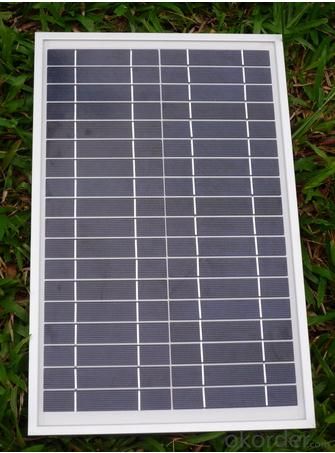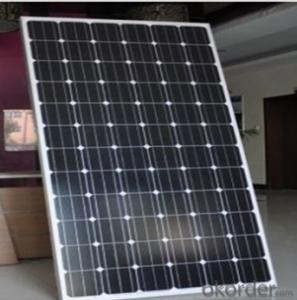140KW CNBM Monocrystalline Silicon Panel for Home Using
- Loading Port:
- Tianjin
- Payment Terms:
- TT OR LC
- Min Order Qty:
- 20 watt
- Supply Capability:
- 1000 watt/month
OKorder Service Pledge
OKorder Financial Service
You Might Also Like
Item specifice
140KW CNBM Monocrystalline Silicon Panel for Home Using
Production description
Garden Television (HGTV) network. Actress Daryl Hannahpromotes off-grid living and constructed her home in Colorado according to those principles, as does survival expert and Dual Survival co-star Cody Lundin,[3]who lives in a self-designed, passive solar earth house in the high-desert wilderness of Northern Arizona, collecting rainwater, composting waste, and paying nothing for utilities.[4][5]
The large magnitude of solar energy available makes it a highly appealing source of electricity. The United Nations Development Programme in its 2000 World Energy Assessment found that the annual potential of solar energy was 1,575–49,387 exajoules (EJ). This is several times larger than the total world energy consumption, which was 559.8 EJ in 2012.
Electrical power can be generated on-site with renewable energy sources such as solar (particularly with photovoltaics), wind, micro hydro, geothermal; with agenerator or Micro combined heat and power with adequate fuel reserves. Such a system is called a stand-alone power system. In addition, it is possible to simply eliminate electric power such as in Old Order Amish and Old Order
On-site water sources can include a well, stream, or lake. Depending on the water source, this may include pumps and/or filtration. Rainwater can also be harvested. Filters can be advanced running off an energy source of boiling .
Feature
1.High conversion efficiencies resulting in superior power output performance.
2.Outstanding power output even in low light or high temperature conditions
3.Optimized design for ease of soldering and lamination
Physical characteristic
1. Rigorous quality control meets the highest international standards.
2. High-transmissivity low-iron tempered glass, strong aluminium frame.
3. Using UV-resistant silicon.
4. IS09001/14001/CE/TUV/UL
Packaging
26pcs in one carton 6pallets in 20foot container 14pallets in 40 foot container.
- Q:What are the different types of solar panels used in solar energy systems?
- The different types of solar panels used in solar energy systems include monocrystalline, polycrystalline, thin-film, and bifacial panels. Monocrystalline panels are made from a single crystal structure, making them highly efficient but more expensive. Polycrystalline panels are made from multiple crystal structures, offering a lower cost but slightly lower efficiency. Thin-film panels use layers of semiconductor materials and are flexible, lightweight, and less efficient. Bifacial panels can absorb sunlight from both sides, increasing their overall energy generation.
- Q:Can solar energy systems be used for powering factories?
- Yes, solar energy systems can indeed be used for powering factories. Solar panels can be installed on the rooftops or open spaces near factories to generate electricity from the sun. This renewable energy source can effectively power various industrial processes, machinery, and equipment, reducing reliance on traditional grid electricity and lowering carbon emissions. Additionally, advancements in solar technology, such as storage solutions, have made it more feasible for factories to operate even during non-sunlight hours.
- Q:How does the presence of nearby power lines affect the performance of solar panels?
- The presence of nearby power lines can have both positive and negative effects on the performance of solar panels. One of the positive effects is that power lines can provide a stable source of electricity to supplement the solar panels' energy production. During cloudy or low-light periods, when solar panels may not generate enough electricity, power lines can ensure a consistent power supply. This can be especially beneficial for residential or commercial properties that heavily rely on solar energy and cannot afford any interruptions in their power supply. On the other hand, the proximity of power lines can also have some negative impacts on solar panel performance. One significant issue is shading. Power lines often cast shadows on solar panels, which can reduce their overall output. Even a small amount of shading on a solar panel can significantly decrease its efficiency, as it disrupts the flow of photons and reduces the amount of sunlight that can be converted into usable electricity. Furthermore, electromagnetic interference (EMI) can occur when solar panels are placed near power lines. EMI can disrupt the normal functioning of solar panels and interfere with their ability to convert sunlight into electricity. This interference can lead to a decrease in overall energy production and efficiency. It is important to note that the specific impact of nearby power lines on solar panel performance can vary depending on various factors such as the distance between the power lines and solar panels, the angle and orientation of the panels, and the design and quality of the solar panels themselves. To mitigate these potential issues, it is recommended to carefully plan and design the installation of solar panels, taking into consideration the proximity of power lines. This may involve adjusting the angle and orientation of the panels to minimize shading and positioning them in areas where there is minimal electromagnetic interference. Additionally, regular maintenance and cleaning of the solar panels can help optimize their performance, regardless of the presence of nearby power lines.
- Q:Can solar energy systems be used in areas with limited access to solar energy insurance coverage?
- Yes, solar energy systems can still be used in areas with limited access to solar energy insurance coverage. While insurance coverage is important for protecting the investment in solar energy systems, its availability may vary in certain regions. However, with proper maintenance, monitoring, and risk management strategies, solar energy systems can still provide sustainable and cost-effective electricity generation in these areas.
- Q:Are there any maintenance costs associated with solar energy systems?
- Yes, there are some maintenance costs associated with solar energy systems. Although solar panels generally require minimal maintenance, occasional cleaning and inspection may be necessary to ensure optimal performance. Additionally, there might be costs involved in replacing any worn-out components or repairing any damages. However, these maintenance costs are typically much lower compared to the savings obtained from using solar energy in the long run.
- Q:Can solar energy systems be used in areas with limited access to solar energy advocacy groups?
- Yes, solar energy systems can still be used in areas with limited access to solar energy advocacy groups. While the presence of advocacy groups can provide additional resources and support, the feasibility of installing and utilizing solar energy systems depends primarily on the availability and intensity of sunlight in the given area. If the region receives sufficient sunlight, individuals or communities can still adopt solar energy independently, even without the presence of advocacy groups. The use of solar energy systems can help reduce reliance on traditional energy sources, lower electricity costs, and contribute to a more sustainable future.
- Q:Solar PV systems
- Second distributed photovoltaic power generation refers to the user in the vicinity of the site or the construction of the operation, to the user side of the spontaneous use of their own, the excess electricity and the balance of the distribution network system for the characteristics of the photovoltaic power generation facilities.
- Q:What happens to excess solar energy produced?
- Typically, excess solar energy is either stored or returned to the grid. There are several methods available for storing excess solar energy, including the use of batteries, thermal energy storage systems, or converting it into hydrogen fuel. Battery storage systems are commonly employed in residential or commercial solar installations, where surplus energy can be stored in batteries during the day and utilized at night or during periods of low sunlight. Additionally, excess solar energy can be fed back into the grid through two processes known as net metering or feed-in tariffs. Net metering enables owners of solar energy systems to receive credit for the surplus energy they generate. This credit can be used to offset the energy they consume from the grid during times when their solar system is not producing enough energy. On the other hand, feed-in tariffs provide financial incentives for solar energy producers to sell their excess energy back to the grid at a predetermined rate. By effectively storing or returning excess solar energy, we can ensure that the generated solar power is not wasted and can be efficiently utilized. This contributes to a more sustainable and renewable energy future.
- Q:How does a solar energy system work?
- A solar energy system works by capturing sunlight using photovoltaic (PV) panels or solar thermal collectors. The PV panels convert sunlight directly into electricity by using semiconductor materials, while solar thermal collectors use sunlight to heat water or air for various purposes. The electricity generated by the PV panels can be used to power homes or businesses, or it can be stored in batteries for later use. Additionally, excess electricity can be fed back into the grid for credit or sold to utility companies. Overall, solar energy systems harness the power of the sun to provide clean and renewable energy.
- Q:Can solar energy systems be used in powering warehouses or distribution centers?
- Solar energy systems are indeed capable of powering warehouses and distribution centers. Many businesses are increasingly adopting solar energy as a sustainable and cost-effective solution for their energy requirements. Warehouses and distribution centers, being large facilities with ample roof space, are ideal candidates for solar panel installations. By installing solar panels on the roof or ground of these facilities, the solar energy generated can be utilized to power various operations within the warehouse or distribution center. This includes lighting systems, climate control, refrigeration units, conveyor belts, and other machinery or equipment. The energy generated can also be stored in batteries for later use during cloudy days or at night. There are several advantages that make solar energy systems a perfect fit for warehouses and distribution centers. Firstly, solar power helps reduce dependence on the traditional grid, resulting in lower electricity bills and long-term cost savings. Additionally, since solar energy is a renewable and clean source, its use reduces greenhouse gas emissions and contributes to a more sustainable business operation. Besides the cost and environmental benefits, solar energy systems offer businesses energy independence and resilience. By generating their own power, warehouses and distribution centers are less susceptible to power outages or fluctuations in the grid, ensuring uninterrupted operations and minimizing downtime. In conclusion, the use of solar energy systems in powering warehouses and distribution centers offers numerous advantages, including cost savings, sustainability, energy independence, and operational resilience. Consequently, an increasing number of businesses are embracing solar energy as a reliable and efficient solution for their energy needs in these types of facilities.
1. Manufacturer Overview |
|
|---|---|
| Location | |
| Year Established | |
| Annual Output Value | |
| Main Markets | |
| Company Certifications | |
2. Manufacturer Certificates |
|
|---|---|
| a) Certification Name | |
| Range | |
| Reference | |
| Validity Period | |
3. Manufacturer Capability |
|
|---|---|
| a)Trade Capacity | |
| Nearest Port | |
| Export Percentage | |
| No.of Employees in Trade Department | |
| Language Spoken: | |
| b)Factory Information | |
| Factory Size: | |
| No. of Production Lines | |
| Contract Manufacturing | |
| Product Price Range | |
Send your message to us
140KW CNBM Monocrystalline Silicon Panel for Home Using
- Loading Port:
- Tianjin
- Payment Terms:
- TT OR LC
- Min Order Qty:
- 20 watt
- Supply Capability:
- 1000 watt/month
OKorder Service Pledge
OKorder Financial Service
Similar products
New products
Hot products
Related keywords





























